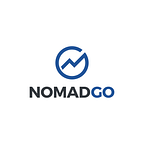How Computer Vision Helps Quick Service Restaurants Accelerate Innovation
Fast casual and quick service dining is about speed, convenience and food quality. For larger restaurant chains, introducing new menu items or services always begins with extensive experiments and innovation in a controlled environment. But because of COVID-19, the industry has been forced to accelerate innovation in response to CDC guidelines and customers’ changing needs. Restaurants have reinvented day-to-day operations on the fly, many of them shutting down over the counter and dining room operations to focus solely on digital-first, curbside service.
In the process, restaurants discovered that curbside and delivery aren’t merely stop-gap measures. The act of innovating helped them find new ways of serving customers that led to improvements across the board, including to their bottom-line. Moving forward, restaurants want to sustain a faster pace of innovation, but the tools they typically use to measure employee productivity and speed of service are manual, can’t generate real-time data, and can’t scale to meet their needs. With the proper tools in place, fast-casual and quick service restaurants can gain the speed and insight to accelerate their go-to-market efforts and set themselves apart from the competition.
Using the Nomad Go Visual Intelligence Engine, quick service and fast casual restaurants can create a digital twin of virtually every aspect of their operations. Nomad Go’s end-to-end solution combines the power of AI, computer vision (CV) and existing in-store data to generate insights across four areas of restaurant operations:
- Customers: understand the impact of new products, new labor models and new store layouts on the customer experience (e.g., measuring how an additional employee in the drive-thru could reduce wait time, how to reconfigure order queuing to improve traffic flow)
- Labor: quantify employee productivity, utilization and efficiency
- Product/menu items: measure and compare variables such as the time needed to prepare menu items, product efficiency across regions and more
- Physical spaces: gain insights into traffic, movement, behavior and activity in your stores ( e.g., where occupant density is highest, where additional seating could be added, how a change in kitchen layout could improve employee productivity)
CV generates data in real-time, providing immediate insights about changes in the customer experience, labor, productivity and product. Nomad Go extracts actionable insights from that data ( no need to clean, organize or filter the data), helping innovation and operations teams to innovate faster and to better understand the impact of incremental changes on store operations. With a fully instrumented store view, brands can compare test results, tweak variables, and fine-tune new processes and models faster than ever.
And with Nomad Go, you can measure the impact of changes across your entire chain. Rather than seeing isolated performance figures from a single test store or lab you’ll get a big-picture view of how operations run across your portfolio, allowing you to continually test and optimize at-scale. For example, track the impact of adding a new menu item on customer wait times, or how that menu item is impacting employee productivity and activity.
The Nomad Go Visual Intelligence Engine gives you a flexible, comprehensive solution for measuring isolated metrics, or monitoring the overall performance benchmarks of a new product rollout. Rather than trying to piece together your solution, go with one that comes ready to help increase the speed and effectiveness of innovation, reduce costs and improve your company’s performance.
Interested in learning more about how Nomad Go Visual Intelligence can accelerate innovation for your organization? Contact us at info@nomad-go.com.
Originally published at https://www.nomad-go.com on April 14, 2021.
